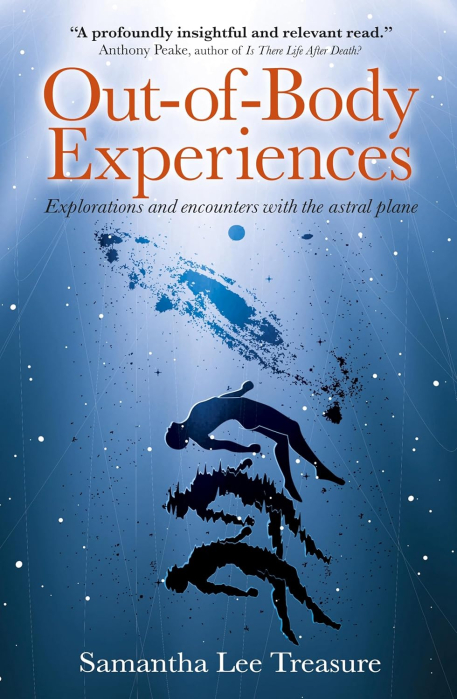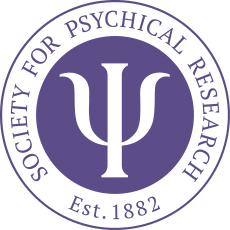
Reviewed by Will Kuberski
Samantha Lee Treasure is someone who’s been driven to explore the unknown. The anomalous experiences she began having during her childhood in Ontario have informed her career choices with spectacular results. She has earned a BSc in Social Sciences and an MA in Medical Anthropology. Her drive to understand out-of-body experiences (OBEs) has resulted in this remarkable book.
When I was asked to review Out-of-Body Experiences, aside from being a little shocked, I was looking forward to the opportunity to bare my teeth a little, honing my most vicious capacity for critique before diving in. After reading half of it I started worrying that it might be impossible for me to remain objective. Each chapter surprised me with how Treasure seemed to be articulating descriptions of many of my own experiences better than I ever have. My astonishment reached its peak when I reached chapter 11: Eckankar and Soul Travel™, having been a card-carrying member when I was nine years old, only to find chapter 12 coming even closer to home: Astral Projection in Witchcraft. I was raised with an intimate knowledge of both subjects.
Out-of-Body Experiences is an astounding debut book from Treasure that will surely serve to help define the subject for the foreseeable future.
Treasure has conducted field research across the world. Defining exactly what an OBE means to a variety of historically disconnected cultures is a priority here. She doesn’t waste time addressing the nitpicking of sceptics and debunkers, nor does she offer the kind of apologetic prefaces often found in the works of many accredited academics who have dared to venture into this subject. Treasure doesn’t engage in any form of subtle apologetics in order to appease the mainstream but instead reminds the reader of what the results of well-executed research can look like.
Out-Body Experiences introduces herreaders to cross-cultural concepts, and language that enriches the concepts and traditions surrounding these experiences. The careful approach Treasure takes, combined with her natural writing style will please more astute readers who are familiar with OBE research while undoubtedly offering a wonderful new rabbit hole for readers new to the subject, but without any hand-holding or dogmatic edicts. Treasure assumes the reader wants answers and delivers. She does a magnificent job of representing a significant sampling of what people around the world think about these occurrences.
Treasure also corrects long-standing misinterpretations of often cited studies, which have been taken as gospel by more casually inspired authors and students of the subject. Those errors became apparent to Treasure while examining what seems like virtually the entire body of extant literature available on the subject. To her credit, she has no problem illuminating points that don’t necessarily fortify her assertions, which is exactly what a good scientist should do after all. This of course helps illustrate a well-balanced picture of the current state of the field of study, which Treasure is undoubtedly setting the standard for here.
Treasure’s open approach to sceptical and primarily materialist perspectives are free from any veiled jabs or the kind of smugness that sometimes accompanies firsthand, esoteric expertise. Allow me to provide one example. In 2009, Susan Blackmore gave a SPR lecture and asked for volunteers to participate in the famous rubber hand illusion experiment, which is intended to demonstrate the illusion of self, and the sensorial and physiological tricks of the brain, thus further proving the supreme truth of materialism. Treasure being the first volunteer, proved to be among those participants (about one third) who did not respond in the way Blackmore expected. Instead of gloating over this small victory, Treasure examines the rubber hand illusion itself and offers insights into why it may affect ”OBErs” differently than those who’ve never had such experiences.
Unfortunately, an obstacle often faced among serious thinkers on the subject of OBEs is the messy reality of semantics, terminology, lingo, and common parlance one inevitably encounters when engaging the subject. Treasure makes this a priority without being directly clinical about it. She makes the examination of those terms as interesting as they can be. Her focus on that aspect of the subject offers clarity to the reader that one might naively expect from all authors that tackle this subject. The tendency for some authors to employ jargon and shop talk may serve them well in their circles, but Treasure is among those whose intention seems to be illumination and clarity for anyone approaching the topic.
Treasure’s well informed references to Aleister Crowley, Samuel Liddell MacGregor Mathers, and the Golden Dawn were immensely surprising and refreshing. Crowley’s experiences, while being monumentally significant to generations of students across many disciplines, are often ignored, ridiculed or discarded by academics. lt’s extremely rare to encounter a serious researcher in any science who has delved as deeply into Crowley’s corpus as Treasure appears to have done. Any student of Crowley will immediately recognise and appreciate the value Treasure ascribes to his work. In contrast, Crowley’s name is often invoked merely to signal an author’s rather superficial awareness of him. Many authors neglect to offer any valid analysis of his immense body of work, perhaps fearing ridicule themselves.
Treasure does not shy away from the traditional keepers of OBE wisdom in the Western world, Witches. As someone who has always identified as a Witch, I think the positivity of this review is evidence of my approval in that regard. (This might after all be at the heart of the reason I was asked to review it, considering my complete lack of academic qualifications.)
From chapter 12, Astral Projection and Witchcraft:
I dug into these resources to find out more about the enduring link between witchcraft and astral travel, exploring how these narratives have evolved over time and why they continue to capture the public imagination. This revealed a fascinating interplay between folklore, cultural fears and personal transformation, where astral projection is often seen as both a mystical gift and a potential threat (p. 167)
Out-of-Body Experiences is brimming with relevant statistics and references that could potentially occupy interested readers for a lifetime of study. It’s a perfect introduction to the subject, but even the most hardened, untenured professor would be well served to read this book, if not only to amend and correct some murky or glossed-over points of past research.
Enlightening, thorough and concise, Out-of-Body Experiences is also Samantha Lee Treasure’s adventure story in a way. It certainly lends itself to cinematic inclinations. One comes away happily bewildered that a writer of Treasure’s apparent calibre has dedicated herself to this subject in such a systematic and unimpeachable way.

